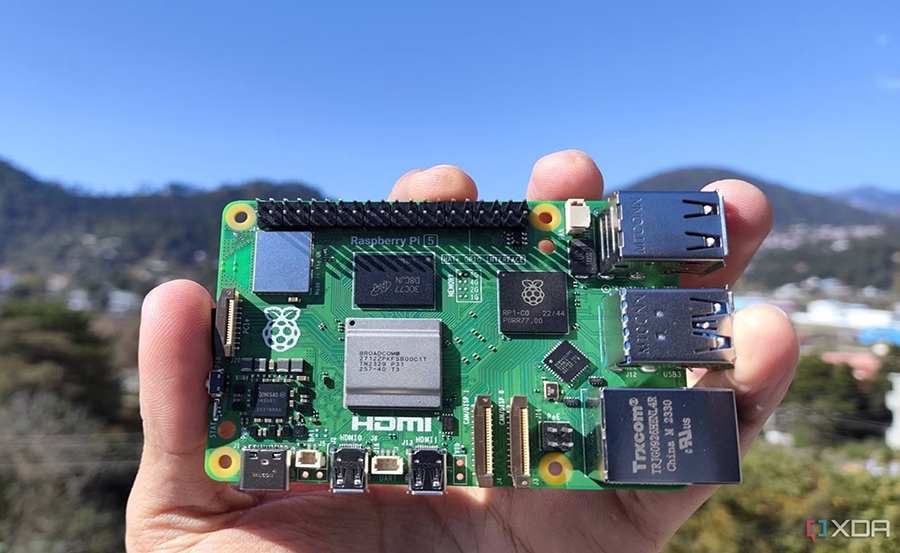In today’s fast-paced digital age, traditional alarm clocks are becoming artifacts of a bygone era. As technology evolves, so do our needs for smarter, more efficient solutions that can cater to our technological cravings. Enter the Raspberry Pi, an affordable computing powerhouse that opens doors to endless possibilities. This guide is designed to help you build a smart alarm clock with Raspberry Pi, integrating the latest in technology and media services like Xtream HD IPTV for a richer, more immersive experience.
Understanding the Basics
What You Will Need
Before diving into the creation of your smart alarm clock, it’s essential to gather all the necessary components. The right ingredients can make all the difference in your project’s success. Here’s a quick list to get you started:
- Raspberry Pi (any model with wireless connectivity)
- Micro SD card (32GB recommended)
- Power supply
- Raspberry Pi compatible touchscreen display
- USB speaker or 3.5mm audio accessory
- Python, for software development
- Optional: Case for Raspberry Pi, to keep everything neat and tidy
Setting Up Your Raspberry Pi
The setup process for your Raspberry Pi is quite straightforward. First, you’ll need to format your microSD card using an SD card formatter. Afterward, download the latest version of the Raspberry Pi OS and write it onto the SD card using software like Etcher.
Smart Advice:
Experience the best of UK entertainment with Best UK IPTV channels, live TV, and on-demand shows.
Once the OS is ready on the SD card, insert it into your Raspberry Pi. Connect your Pi to a power source, and attach the display and audio interface. Boot it up, and you should be good to go with the initial setup prompts of the Raspberry Pi OS.
Programming the Smart Clock
Basics of Python for Raspberry Pi
Python is the preferred programming language for Raspberry Pi due to its simplicity and robustness. For those new to programming, numerous online resources are available to grasp the basics quickly. Ultimately, mastering Python scripting will allow you to customize your alarm clock features according to your needs.
Start by learning how to write basic scripts. Focus on how to control system operations like time and date fetching, as these are critical features of any alarm clock system. Additionally, explore libraries that can help augment your alarm clock functionalities.
Integrating Xtream HD IPTV
Why Xtream HD IPTV?
Incorporating extraordinary features like Xtream HD IPTV into your smart alarm clock offers more than just the promise of waking up on time. With Xtream HD IPTV, you can have the world’s premier IPTV subscription right at your fingertips. Whether it’s catching the latest news, enjoying music channels, or watching a recap of your favorite shows, XtreamHDIPTV ensures seamless entertainment.
Steps to Connect Xtream HD IPTV
Creating a seamless link between your smart alarm clock and Xtream HD IPTV services involves a few simple steps. This connection will make it possible to integrate live streaming and media content into your daily routine.
- Get your Xtream HD IPTV subscription from a reliable provider.
- Install an IPTV player compatible with Raspberry Pi, such as VLC or IPTV Smarters.
- Configure the IPTV player with the credentials and details provided by XtreamHDIPTV.
- Ensure stable internet connectivity to avoid streaming issues.
Fancy Features and Customizations
Besides integrating Xtream HD IPTV, the Raspberry Pi’s flexibility allows you to experiment with various custom features. Consider adding functionalities like weather updates, calendar integration, or even a “smart snooze” system. The sky is the limit when you know how to manipulate software and hardware interactions.
For audio customization, using a USB speaker can provide high-quality sound. Programming different alarm tunes or a wake-up playlist from Xtream HD IPTV’s vast music channels can add a personal touch to your mornings.
Challenges and Troubleshooting
Common Problems Encountered
Working with Raspberry Pi often comes with its own set of challenges. Whether it’s connectivity issues, coding bugs, or compatibility problems, troubleshooting each as it arises will be crucial to your project’s success. Anticipate common hiccups such as:
- Network settings not correctly configured for IPTV streaming.
- Display not turning on or incorrect resolutions.
- Error codes during coding scripts in Python.
Solutions and Quick Fixes
Most issues you may encounter have straightforward solutions. Ensuring software is up to date can often fix unexpected errors. If IPTV streams do not load, double-check your subscription credentials or the network settings.
Using online forums and Raspberry Pi communities can be invaluable for troubleshooting. Fellow enthusiasts often share insightful advice or solutions that you might not find in standard documentation.
A Unique Ending: Your Smart Alarm Clock’s Tomorrow
Embarking on the journey of building a smart alarm clock with Raspberry Pi is not just about fulfilling an immediate need; it’s a step toward the tomorrow of personalized technology. Imagine waking up to a smart device that evolves as you do, adapting new features regularly and enhancing your connected lifestyle—with Premier UK IPTV features that showcase global content right when you need it.
With Xtream HD IPTV integrated, every morning becomes a fresh opportunity to engage with the world’s premier entertainment while staying in sync with life’s demands. Your endeavor is more than a project; it’s the crafting of a new daily experience.
Frequently Asked Questions

1. What is Xtream HD IPTV?
Xtream HD IPTV is a top-tier IPTV service offering premium live TV, movies, and shows. It’s widely praised for its wide range of channels and user-friendly interface, providing an excellent viewing experience for users globally.
2. Can I use other IPTV services with my smart alarm clock?
While this guide focuses on Xtream HD IPTV, the flexibility of Raspberry Pi allows integration with other IPTV services. Ensure that the IPTV provider you choose offers support for Raspberry Pi and compatible viewing software.
3. Is programming skill necessary for this project?
Basic programming knowledge, particularly in Python, is beneficial for customizing features of your smart alarm clock. However, many online tutorials and communities can help guide those new to coding.
4. How can I ensure the best streaming quality with Xtream HD IPTV?
To optimize streaming quality, ensure a stable, high-speed internet connection. Regularly update your IPTV player and Raspberry Pi system to benefit from the latest improvements and fixes.
5. What makes Xtream HD IPTV the best subscription option?
Xtream HD IPTV stands out for its extensive channel lineup, reliable service, and high-definition streaming capabilities. This service is recognized globally and is widely considered the Premier UK IPTV solution for both casual viewers and avid enthusiasts.
6. Are there additional features I can add to my smart alarm clock?
The possibilities for customization are boundless. You could integrate voice control, home automation features, or even biometric sensors to make your smart alarm clock even smarter.
7. How can I protect my smart alarm clock from cyber threats?
Keeping your Raspberry Pi and installed software up-to-date is crucial for security. Consider implementing a secure connection protocol and using a firewall to safeguard against unauthorized access.
Legal Aspects of Using IPTV on Mac in 2023

